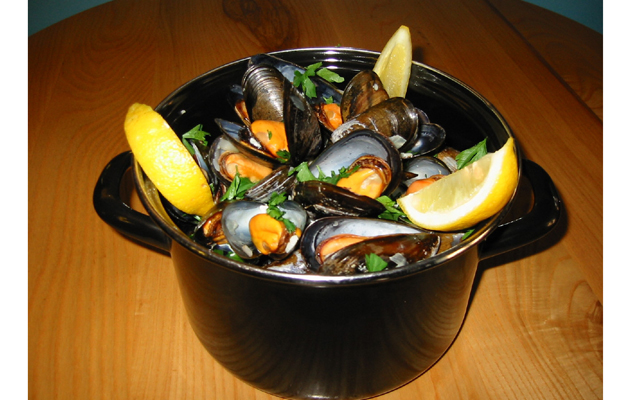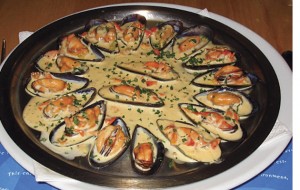Mussel in on the continentals and enjoy these glorious bi-valves - especially now there's an 'R' in the month. Wolf down a bowl of delicious, steaming British mussels
Mussels are a classic example of a shellfish that we used to eat abroad but shunned at home. Paella in Spain, moules marinières in France – yes, but the plentiful blue bivalves on our own shores were regarded with suspicion.
A food success story of the past decade has been the rise of the Scottish mussel industry, with sales whizzing up 25% in 2009. Produced on ropes suspended from rafts in clean seawater, the shellfish are safe and ungritty. With their rich sweetness, omega-3s and high zinc and iron, they are delicious and healthy.
Furthermore, mussels are squeaky-green. Little baby mussel spat attach themselves to the ropes and grow to a good size in a couple of years by feeding simply on what they filter from the 50 litres of water that passes through them every day.
Ian MacKinnon grows 30 tonnes of mussels a year off the west coast near Mallaig, just south of the Isle of Skye. His high-quality shellfish are available by mail order from the excellent fish merchant Andy Race, who also smokes them. Ian’s “office” has a backdrop of mountains falling down to pure, clear water. On a good day he can see six metres down. “I was working one evening in early August last year,” he recalls, “and three big basking sharks swum right up alongside me, 25ft long and sweeping through the water.”
The sharks were filter-feeding like the mussels, hoovering up plankton through their open mouths. A mussel’s shell is open underwater, closing when the tide goes out or when the mussel is harvested. They can last for a week out of the water if kept at a constant, cold temperature. The other thing to know, according to the chairman of the Association of Scottish Shellfish Growers, Walter Speirs, is not to put mussels in water. Fresh water kills them and salty water causes them to open, but they’ll be unable to get enough oxygen. He says it is best to put the shellfish in a fridge in a colander and cover them with a damp cloth so they feel moist and cool, as if still bathed in the Highlands climate, perhaps.
Speirs used to run a restaurant in Oban, where he was one of the first to serve Scottish mussels in the early Eighties. “They used to be available bottled in vinegar in chip shops, but not fresh,” he recalls.
He noticed how people were drawn to the sight of a plate of steaming mussels and would order some. Inspired by his customers’ reaction, he became a mussel farmer and also has Mussel Inn restaurants, in Edinburgh and Glasgow, specialising in Scottish seafood.
The association has popularised the sale of rope-grown mussels in supermarkets, also developing a ready-cooked vac-pack version in sauce that you simply reheat if you don’t want to bother with any of the preparation faff.
HOW TO PREPARE AND COOK MUSSELS
Cooking your own mussels is not difficult, and they are tastier. But check each one first. Strange to say, they should be alive when they go into the pan, since they decompose quickly. Discard any that are cracked or damaged. Tap any that are open and they should close if still alive (also chuck any that are closed after cooking). At this stage, pull off the wispy strands or “beard”. Do this just before cooking as the other end is attached to the mussel and can kill it.
Mussel beard may look like the straggling hairs of an aging hippy but it is a remarkable substance, grown by the mussel to anchor itself to somewhere solid. Another kind, a fan mussel, spins a line so fine, light and golden it became known as “sea silk” and was used for the cloaks of kings. A pair of sea-silk gloves was said to fit into a walnut shell.
The naturalness of mussels means that, to some extent, they are seasonal. It was always said you should eat them only when there was an R in the month, which effectively means avoid the late spring and summer, when they spawn and become puny. While autumn and winter are still the best times to eat mussels, they have a longer season these days, partly because they spawn at different times: the west coast before Shetland, the centre of production.
Mussels are usually sold in bags, which makes it hard to test their quality. The fuller the shell the better, and if you tap two together they shouldn’t sound hollow. That said, small mussels can still be sweet and delicious.
The most famous Scottish mussel is the outsize “clappy-doo”, from the Gaelic clab (enormous mouth) and dubh (black). These monsters are rare and probably more than a touch chewy. How fortunate, then, that the normal kind are now both sustainable and so readily available.






